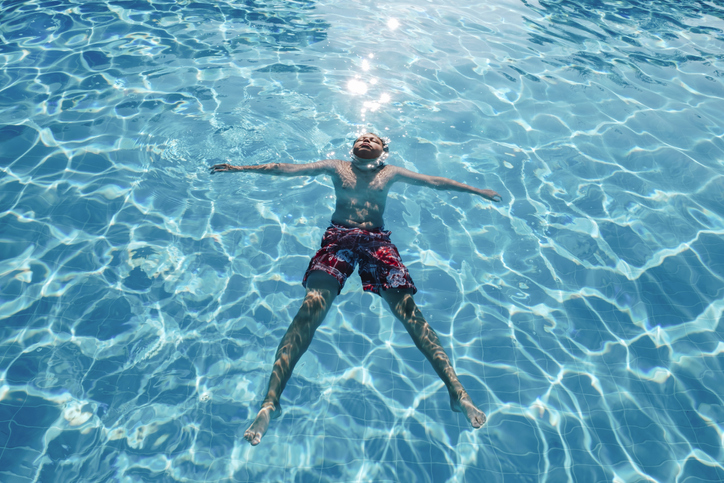Learning how to float or swim as an adult can be an intimidating task. With a variety of different body shapes, sizes, density, and compositions it might be difficult for some to learn to float than others. With practice and learning more about body positioning in this blog, it will hopefully help you succeed in learning this new and valuable skill.
Body position is the most important concept in learning how to float.
It is being able to understand that when there is an action, there is an equal and opposite reaction. This applies to knowing how one movement affects the rest of your body position.
The 4 Tips include:
1) Head Position
2) Arching your back
3) Spreading out limbs
4) Focus on Breathing
Head Position

Your head position is an essential aspect in learning how to float in the water and affects the rest of your body. Without a correct head position, it is difficult to incorporate the other concepts.
A correct head position will help improve your hip position which is also vital.
Tilt your head back and look up, your ears should be submerged in the water and you should feel relaxed and not tense. By looking straight up and slightly behind you, your hips will rise to the surface.
Think of it like a seesaw. When one side is up, the other is down.
By lifting your head up, your hips will go down. Try practicing different head positions to see how it affects your hips.
Arching your Back
By arching your back, your hips will rise into the right position and help you to float naturally.
I often tell younger children to pretend that they are Santa and push out their belly from eating all the cookies. By protruding your belly, you are able to relax and not be as tense in the center of your balance.
With arching your back, try pulling your shoulder blades together as well. It will help open up your chest and release any tension.
Spreading out Limbs

By spreading out your arms and legs, you are able to create more surface area.
Think of it in the opposite way, by being in a ball, you are more likely to go down. Whereas spreading your arms and legs out will distribute the weight across the water’s surface.
Focus on Breathing
Breathe normally! When you hold your breath for as long as you can, initially you will float great, but when you need to take a deep breath in, you will go down while exhaling the air.
Instead, try to stay consistent with your breathing, as you inhale you will slowly rise in the water, and when you exhale you will go slightly lower.
It is better to be going up and down over a small distance than to take drastic breathes causing you to go up and down more dramatically in the water.
Other tips and tricks
- Try to build momentum- By pushing off a wall, the momentum will help your legs float up to the surface. By stationary floating, your legs will eventually start to go down.
- Have confidence in yourself and relax- By relaxing, your body will not be tense and you will be able to spread yourself out.
- Learn how different movements affect the rest of your body- Like I mentioned earlier, practice different body positions (head, hips, etc.) to learn how it affects floating. By understanding what does not work, it will help in knowing what does.
- Floating on your stomach- If you feel confident holding your breath underwater, try floating on your stomach first with your arms and legs extended outwards. The air in your lungs will help you float to the surface.
- Use a pool noodle- A pool noodle can also help you. Try putting it under your hips and it will raise them to the surface.
Conclusion
Adult drownings are far more common than most people think, accounting for 64% of all drownings between 2009-2018. Hopefully, by implementing these tips, it can help you with learning how to float. If not, do not worry, there are tons of swim coaches willing to help you learn to swim. Follow this link to see if there are swim instructors in your area and to sign up for lessons. Good luck!
Hannah Kota’s bio:
Swim Instructor in Fort Lauderdale
Hello! My name is Hannah and I’ve been swimming competitively since 2007. I have also coached since 2014, instructed group/private lessons since 2015, and lifeguarded since 2016. I’ve worked with infants to adults. I am currently a student-athlete for Nova Southeastern University studying Exercise Sports Science for the graduating class of 2022. I love teaching swimming because it allows me to help those who are either inexperienced or not as confident in the water. Swimming can save a life.
ABOUT SUNSATIONAL SWIM SCHOOL
Sunsational Swim School is the 🥇 #1 rated provider of private, at-home swimming lessons in America. We have specialized swim instructors for students ages 6 months to adult, beginner to advanced. Featured on ABC, CBS, Impact 100, The List and others, Sunsational instructors have a minimum of 2 years of teaching experience, are CPR certified and insured, and have collectively taught over 302,223 lessons for more than 74,415 students nationwide!



